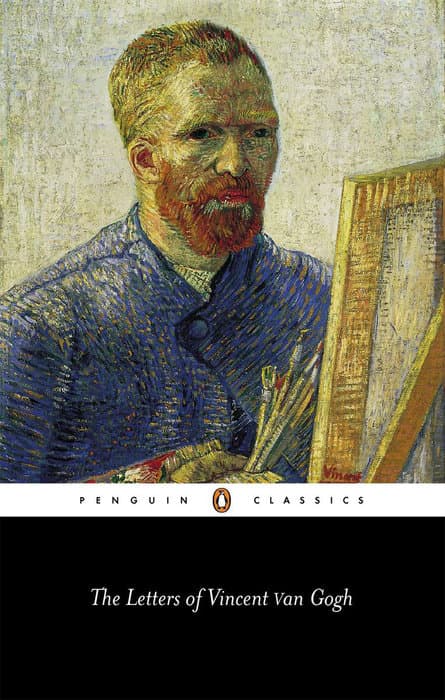
Book Review Summary: The Letters of Vincent van Gogh
Introduction
"The Letters of Vincent van Gogh" is a collection of letters written by the renowned post-impressionist painter, Vincent van Gogh. Edited and translated by Ronald de Leeuw and Arnold Pomerans respectively, this book provides a glimpse into the life and work of one of the most haunting figures in modern Western culture. Van Gogh's letters, spanning his artistic career, offer a candid and moving account of his struggles, his search for love, his mental illness, and his relationship with his brother Theo. They stand as an intense personal narrative of artistic development and a unique account of the process of creation.
About Vincent van Gogh
Vincent Willem van Gogh, born in Groot-Zundert, Holland, was a highly emotional and talented artist who lacked self-confidence. Van Gogh's early works were somber-toned and sharply lit genre paintings, but he eventually moved to Paris to study with influential artists such as Gauguin, Monet, and Pissarro. In Paris, he began to lighten his palette and adopt the short brushstrokes of the Impressionists. However, his nervous temperament and intense dedication to his craft took a toll on his health. In 1888, he left Paris for Arles, where he produced some of his most famous works, including "Sunflowers."
Analysis of Views
-
Candid and Moving Portrayal: Van Gogh's letters reveal a man of great emotional and spiritual depths, contradicting the popular myth of him as an anti-social madman and a martyr to art. The letters provide a personal account of his struggles with mental illness and his search for love, offering readers an intimate understanding of his inner world.
-
Artistic Development and Process: The letters stand as an intense personal narrative of artistic development. They offer insights into Van Gogh's creative process, his inspirations, and his artistic goals. Readers gain a deeper appreciation for the artist's dedication and commitment to his craft.
-
Unique Account of Creation: The letters serve as a unique account of the process of creation. They provide a window into Van Gogh's thought process as he grapples with artistic challenges and seeks to express himself through his work. Readers gain a deeper understanding of the artist's creative journey and the sacrifices he made in pursuit of his artistic vision.
-
Inspirational Perspective: Van Gogh's letters offer an inspirational perspective on the role of art in society. He believed that art should be useful and serve a purpose beyond mere aesthetics. His letters highlight the importance of finding one's calling and pursuing it with passion and dedication.
-
Historical Context: The letters are linked by explanatory biographical passages that provide historical context for Van Gogh's life and work. Readers gain a deeper understanding of the social, cultural, and artistic landscape in which Van Gogh operated, allowing them to appreciate his contributions to modern art history.
Reasons for Recommendation
-
Intimate Portrayal: The letters offer an intimate portrayal of Van Gogh's life and work, providing readers with a deeper understanding of the artist's struggles and triumphs. This personal narrative adds depth to Van Gogh's legacy and offers readers a unique perspective on his artistic journey.
-
Insight into Artistic Process: The letters offer insights into Van Gogh's creative process, providing readers with a glimpse into the mind of one of history's most influential artists. This insight into Van Gogh's artistic development allows readers to appreciate his contributions to modern art history on a deeper level.
-
Inspirational Perspective: Van Gogh's letters offer an inspirational perspective on the role of art in society. His dedication to his craft and belief in the transformative power of art resonate with readers who are seeking inspiration and guidance in their own lives.
Reasons for Not Recommendation
-
Lack of Artistic Insight: Some readers may find that the letters do not provide enough insight into Van Gogh's artistic process or technique. While they offer glimpses into his inspirations and goals, readers seeking detailed information about Van Gogh's creative process may be disappointed.
-
Emotional Content: The letters contain emotional content that may be challenging for some readers. Van Gogh's struggles with mental illness and his personal relationships are explored in detail, which may be difficult for those who prefer more lighthearted or uplifting reading material.
Conclusion
"The Letters of Vincent van Gogh" offers readers a unique opportunity to delve into the life and work of one of history's most influential artists. Through Van Gogh's candid letters, readers gain an intimate understanding of his struggles, his artistic process, and his dedication to his craft. While some readers may find that the book lacks detailed information about Van Gogh's technique or contains emotional content that is challenging, the book remains a valuable resource for anyone interested in modern art history or seeking inspiration from an artist who embodied the transformative power of art.